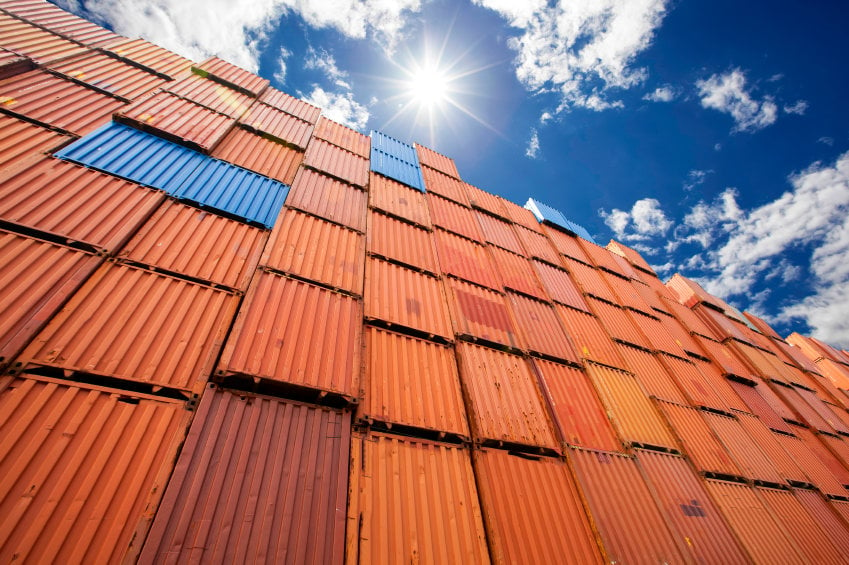Global logistics is such a diverse topic that it is almost impossible to narrow down the possible issues into five. However below issues are the most common ones that I have experienced throughout the years.
Ever changing customer needs
The era of one fits all type of service providing has ended. Nowadays, logistics solutions must be tailored to each customer. Full transparency of orders, visibility from raw material stage to final goods sale, and reverse logistics have almost become standard for some commodity groups. With too many variables in global logistics and many different parties getting involved, keeping above level of service might be challenging at times.
On time delivery
The situation in the US West Coast ports over the past 10 months has been nightmare for all parties involved, due to the work slowdowns. Vessels that usually takes about two weeks to arrive from Asia wouldn’t discharge for almost a month. At some point, the average container pick up time from the terminal was 15 days. This is just one small example of how it becomes more and more challenging to keep on time delivery rates high. A strike in India, war risk in Middle east, piracy in Somalia and even Chinese New Year Holiday are all contributing factors to this problem one way or another. As we become more and more interconnected, we will see these problems will increase in the future
Infrastructure
In the age of mega alliances, one major problem stands out: the infrastructure. With thousands of vessels already serving the major trade lanes around the globe, the problem of lack of infrastructure has become clearer recently. Most of the terminals are still trying to complete their set up to accept such large vessels and service them. This is causing congestion problems at some terminals. Also Panama Canal expansion is still underway and although it’s expected to be completed by next year, we will still see some issues in the beginning. Although cost effective, less carbon emission and makes more economical sense for the steam shiplines. Without the infrastructure to accommodate these vessels, we will see the congestion issues to continue.
Infrastructure problems, especially in developing countries, pose a serious problem in general. The container handling from Asia to US increased from 115.7million teus to 405 million teus between years 2000 and 2014. This increase is expected to continue in the coming years, especially after the free trade agreements being worked on are put into effect. Although the most sophisticated one, China is still struggling with keeping up the increased demand. Indian road conditions, south east Asian weather related problems, are all contributing to Infrastructure problems.
Capacity
Overcapacity in ocean shipping and tightening capacity in domestic shipping in the US are both affecting the logistics world in a different way. Various studies were conducted by Drewry and Alphaliner. They found that freight rates are on continuous pressure due to large vessel deliveries. Lack of demand and oversupply was one of the biggest problems in the past few years. The three largest container carriers — Maersk, MSC and CMA CGM — have on order capacity equal to 15.6 percent of their current combined fleet; the next 18 largest carriers have orders equal to 19.8 percent of their existing fleet.
East coast shipments from Asia still under space pressure which has driven the rates to the highest levels in years, however overcapacity for west coast still remains as an issue. When it comes to domestics shipping, there is tightening capacity problems. As per the latest study, there are around 30,000 trucker shortages in the US. The industry is almost at 100-percent active truck utilization. This is driving the trucking rates higher. Also, the aging workforce, increased regulations and increased cost pressure are negatively affecting the flow of cargo domestically. The recent port congestion in west coast and harsh winter conditions in the past few years in east and Midwest of the US have made everything worse.
Security
Security is growing concern in logistics industry due to goods are being passed from provider to provider. Shippers book the cargo with local truckers in origin, who deliveries the cargo to local warehouse for handling. The warehouses then load the cargo to trucks which deliver the containers to ports. When the shipment arrives to its final destination, it has passed through seven or eight different sets of hands. Unless everyone involved in this process does their due diligence, security becomes a problem. When any party (from shippers to local warehouses to truckers that handle the deliveries) breaks the procedures, it is only a matter of time before something seriously negative will happen. It is important to work with service providers that have secure supply chain processes, that have security places in place and that participate government security programs such as C-TPAT or AEO.
Other than above, lack of talent, pricing pressures, and difficulty in forecasting due to global economic changes can be also considered as general problems.




